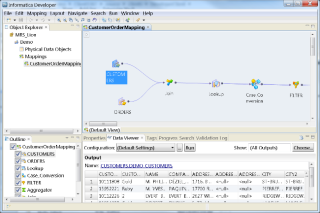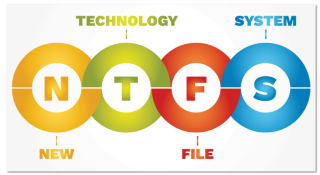Come installare Golang 1.8.3 su CentOS 7, Ubuntu 16.04 e Debian 9
Golang è un linguaggio di programmazione sviluppato da Google. Grazie alla sua versatilità, semplicità e affidabilità, Golang è diventato uno dei più popolari
Questa guida spiega come creare l' archiviazione di oggetti Vultr nell'applicazione Go con il client Vultr Go . Vultr Object Storage è compatibile con l'API S3.
Il client Vultr Go viene utilizzato per interagire con l' API Vultr . L'API Vultr ti consente di controllare le risorse associate al tuo account, incluso l'archiviazione degli oggetti Vultr. Informazioni dettagliate sul client Vultr Go sono disponibili in questo articolo .
Crea la cartella nella directory corrente.
$ mkdir vultr_demo
Inserisci la nuova cartella
$ cd vultr_demo
$ go mod init vultr_demo
$ go get github.com/vultr/govultr
Imposta la variabile di ambiente VULTR_API_KEY sulla tua chiave API. La chiave API è disponibile qui: https://my.vultr.com/settings/#settingsapi
Avviso: proteggi la tua chiave API come se stessi proteggendo la tua password. La chiave API ha accesso all'intero account, inclusi fatturazione, server e spazio di archiviazione.
Ad esempio, su Ubuntu Linux, aggiungi questa riga a ~/.profile.
export VULTR_API_KEY=YOUR_API_KEY_HERE
Incollare ciascuno dei seguenti frammenti di codice in un nuovo file denominato main.go. Il file completo è anche disponibile per il download .
Imposta il pacchetto e importa le librerie richieste.
package main
import (
"context"
"log"
"os"
"time"
"github.com/vultr/govultr"
)
Inizia la main()funzione.
func main() {
Leggi la variabile d'ambiente chiave API.
var (
// Get our Vultr API Key from an environment variable.
VultrAPIKey = os.Getenv("VULTR_API_KEY")
)
Crea il client Vultr.
// Create a Vultr client with our API Key.
vultr := govultr.NewClient(nil, VultrAPIKey)
Specificare un percorso per creare l'archiviazione oggetti. Recupera i percorsi dei cluster, verifica che uno sia disponibile, scegli un cluster e visualizzalo.
// Find the clusters we can create our Object Storage in.
clusters, err := vultr.ObjectStorage.ListCluster(ctx)
if err != nil {
log.Fatalf("Error listing clusters: %s", err)
}
// Verify there's at least one cluster.
if len(clusters) < 1 {
log.Fatal("Could not find any clusters to create our Object Storage")
}
// Choose the first cluster, and print it.
cluster := clusters[0]
log.Printf("Chosen cluster: %+v", cluster)
Creare l'archivio oggetti nel cluster selezionato.
// Create our Object Storage in the first cluster listed with our custom label.
label := "my-object-storage"
storageID, err := vultr.ObjectStorage.Create(ctx, cluster.ObjectStoreClusterID, label)
if err != nil {
log.Fatalf("Error creating storage: %s", err)
}
log.Printf("Created our Object Storage with the ID: %d", storageID.ID)
Attendere fino a quando la memorizzazione degli oggetti è attiva.
var storage govultr.ObjectStorage
// Query the API every five seconds to until our server is ready.
for {
// List all of the Object Storage containers with our label and include the S3 credentials.
list, err := vultr.ObjectStorage.List(ctx, &govultr.ObjectListOptions{
Label: label,
IncludeS3: true,
})
if err != nil {
log.Fatalf("Error listing storage with label \"%s\": %s", label, err)
}
// Make sure we found one (and only one) Object Storage container.
if len(list) != 1 {
log.Fatalf("%d object storage containers exist with the label \"%s\"; we need 1", len(list), label)
}
storage = list[0]
// If the server is active, break out of this loop.
if storage.Status == "active" {
break
}
// Wait for five seconds before querying the API again.
log.Printf("The Object Storage's status is currently \"%s\", waiting for another five seconds to check if it's \"active\".", storage.Status)
time.Sleep(time.Second * 5)
}
Visualizza il nome dell'endpoint e le credenziali di connessione.
// Print the information of our new Object Storage.
log.Print("Successfully created and listed our Object Storage!")
log.Printf("Object Storage: %+v", storage)
// We also have S3 credentials here now, so we could open an S3 compatible client.
log.Printf("S3 credentials: %s - %s - %s", storage.S3Hostname, storage.S3AccessKey, storage.S3SecretKey)
Termina la funzione principale.
// end main()
}
Salvare ed eseguire il main.gofile completato .
go run main.go
2020/03/03 13:05:48 Chosen cluster: {ObjectStoreClusterID:2 RegionID:1 Location:New Jersey Hostname:ewr1.vultrobjects.com Deploy:yes}
2020/03/03 13:05:48 Created our Object Storage with the ID: xxxxxxxx
2020/03/03 13:05:49 The Object Storage's status is currently pending, waiting for another five seconds to check if it's active.
2020/03/03 13:06:06 Object Storage: {ID:34214512 DateCreated:2020-03-03 13:05:47 ObjectStoreClusterID:2 RegionID:1 Location:New Jersey Label:my-object-storage Status:active S3Keys:{S3Hostname:ewr1.vultrobjects.com S3AccessKey:[REDACTED ACCESS KEY] S3SecretKey:[REDACTED SECRET KEY]}}
2020/03/03 13:06:06 S3 credentials: ewr1.vultrobjects.com - [REDACTED ACCESS KEY] - [REDACTED SECRET KEY]
In questo esempio, il nome dell'endpoint è ewr1.vultrobjects.com e le chiavi vengono redatte. Accedi al tuo nuovo archivio oggetti con qualsiasi client compatibile S3 usando il nome dell'endpoint, la chiave di accesso e la chiave segreta mostrata dal tuo programma Go.
Golang è un linguaggio di programmazione sviluppato da Google. Grazie alla sua versatilità, semplicità e affidabilità, Golang è diventato uno dei più popolari
Golang è un linguaggio di programmazione sviluppato da Google che manterrebbe le tradizioni di C, ma si concentra sulla semplicità e sulla sicurezza. È diventato un languag popolare
Go (Golang) è un moderno linguaggio di programmazione sviluppato da Google e incentrato su semplicità e sicurezza. È diventato un linguaggio popolare usato per server-sid
Requisiti Conoscenza di base di UNIX. FreeBSD x64 con Nginx installato. Strumenti di installazione Avrai bisogno di diversi programmi che non sono forniti con FreeBSD. ru
Go (noto anche come Golang) è un linguaggio di programmazione di tipo C compilato staticamente, sviluppato da Google. La semplicità e la versatilità di Go hanno fatto b
Gli attacchi ransomware sono in aumento, ma l'intelligenza artificiale può aiutare ad affrontare l'ultimo virus informatico? L'intelligenza artificiale è la risposta? Leggi qui sai è AI boone o bane
ReactOS, un sistema operativo open source e gratuito è qui con l'ultima versione. Può essere sufficiente alle esigenze degli utenti Windows moderni e abbattere Microsoft? Scopriamo di più su questo vecchio stile, ma un'esperienza del sistema operativo più recente.
Whatsapp ha finalmente lanciato l'app desktop per utenti Mac e Windows. Ora puoi accedere facilmente a Whatsapp da Windows o Mac. Disponibile per Windows 8+ e Mac OS 10.9+
Leggi questo per sapere come l'intelligenza artificiale sta diventando popolare tra le aziende di piccole dimensioni e come sta aumentando le probabilità di farle crescere e dare un vantaggio ai loro concorrenti.
Recentemente Apple ha rilasciato macOS Catalina 10.15.4 un aggiornamento supplementare per risolvere i problemi, ma sembra che l'aggiornamento stia causando più problemi che portano al bricking delle macchine mac. Leggi questo articolo per saperne di più
13 strumenti commerciali per l'estrazione dei dati dai Big Data
Il nostro computer memorizza tutti i dati in un modo organizzato noto come file system di journaling. È un metodo efficiente che consente al computer di cercare e visualizzare i file non appena si preme search.https://wethegeek.com/?p=94116&preview=true
Man mano che la scienza si evolve a un ritmo rapido, assumendo gran parte dei nostri sforzi, aumentano anche i rischi di sottoporci a una singolarità inspiegabile. Leggi, cosa potrebbe significare per noi la singolarità.
Uno sguardo a 26 tecniche di analisi dei Big Data: Parte 1
L'intelligenza artificiale nell'assistenza sanitaria ha compiuto grandi passi avanti negli ultimi decenni. Pertanto, il futuro dell'IA in sanità continua a crescere giorno dopo giorno.






